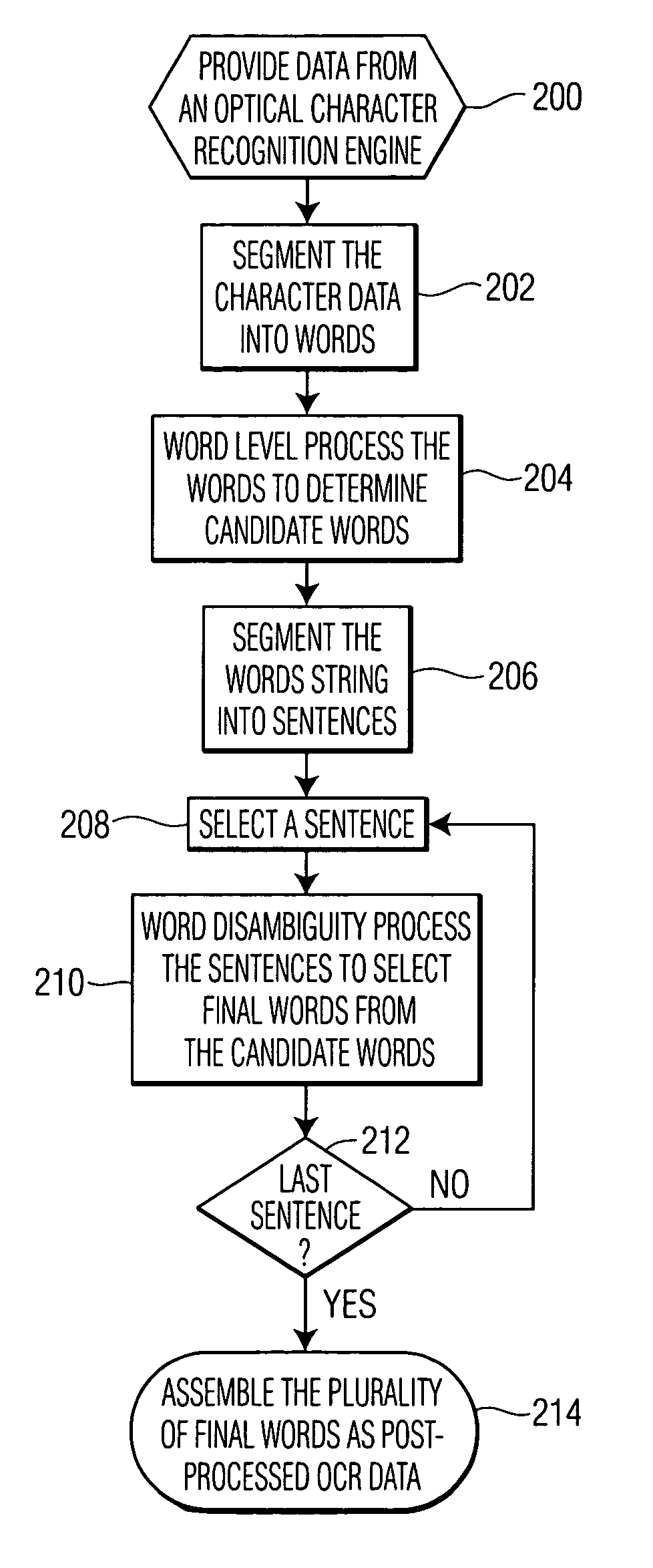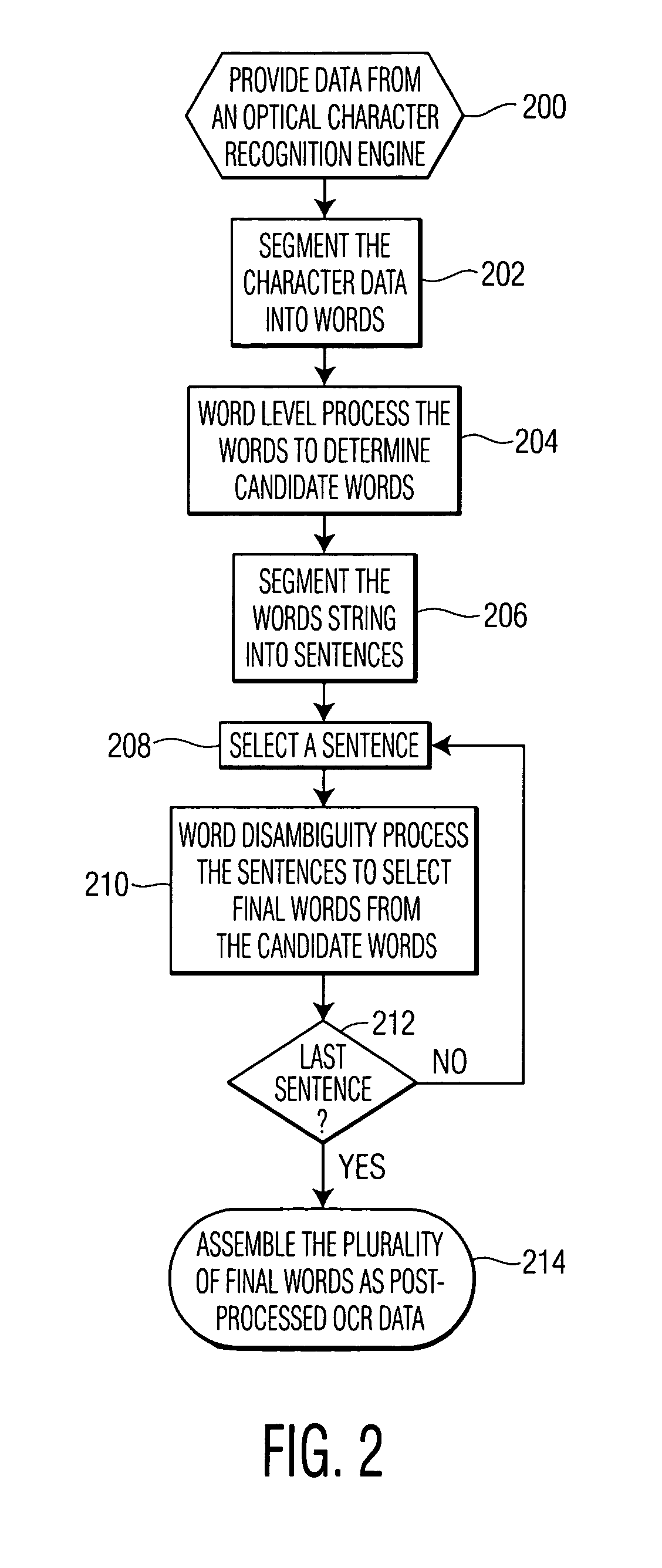Post-processing system and method for correcting machine recognized text
a post-processing system and machine recognition technology, applied in the field of ocr, can solve the problems of low accuracy rate of existing ocr engines, unacceptably high error rate of commonly available ocr engines, and low recognition rate of best presently available ocr engines
- Summary
- Abstract
- Description
- Claims
- Application Information
AI Technical Summary
Problems solved by technology
Method used
Image
Examples
Embodiment Construction
[0017]The present invention involves a method of post processing machine-recognized text from an OCR engine, particularly an OCR engine with a low recognition rate, and an apparatus for performing this method. An exemplary embodiment of the method may include linguistic models, such as chunk and n-gram methods.
[0018]FIG. 1 illustrates a block diagram of an exemplary apparatus for post-processing of OCR data to improve to the accuracy of the resulting machine recognized text. In FIG. 1, data from OCR engine 100 is processed by post-processor 102 and then provided to output device 104. The output device may include a digital storage device, computer system, or printer. Post-processor 102 includes several processing modules: word segmentation engine 106, word level processor 108, sentence segmentation engine 110, and word disambiguity processor 112. These processing modules may be implemented as special purpose circuitry or they may be carried out within a general purpose computer syst...
PUM
 Login to View More
Login to View More Abstract
Description
Claims
Application Information
 Login to View More
Login to View More - R&D
- Intellectual Property
- Life Sciences
- Materials
- Tech Scout
- Unparalleled Data Quality
- Higher Quality Content
- 60% Fewer Hallucinations
Browse by: Latest US Patents, China's latest patents, Technical Efficacy Thesaurus, Application Domain, Technology Topic, Popular Technical Reports.
© 2025 PatSnap. All rights reserved.Legal|Privacy policy|Modern Slavery Act Transparency Statement|Sitemap|About US| Contact US: help@patsnap.com



